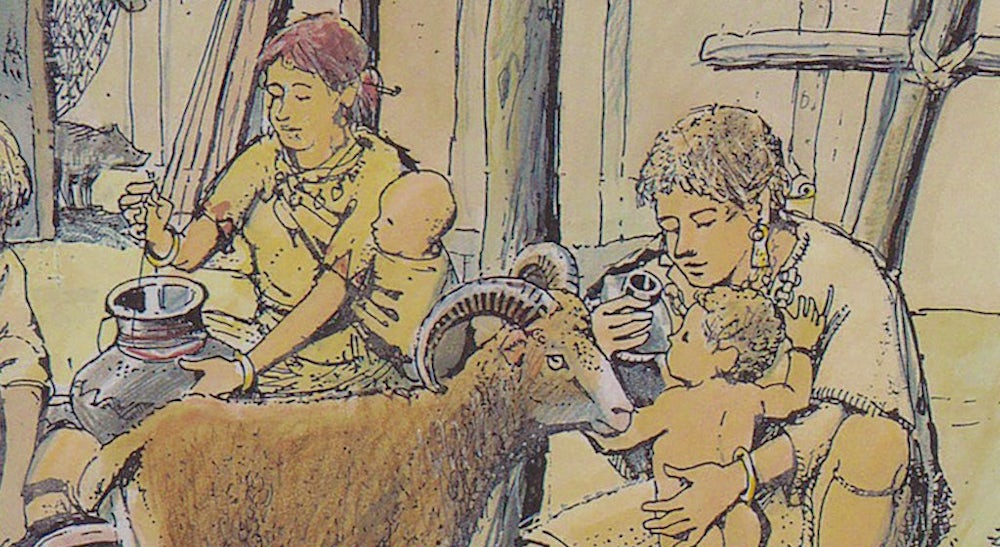If a mom feeds her baby from a bottle before the internet even exists to judge her, will she still be an object of derision?
Early humans fed their babies (gasp!) animal milk from (horrors!) bottles, so let the prehistoric mommy shaming begin.
Archaeologists recently excavated the first known baby bottles, small ceramic pots with spouted openings, from children’s burial sites in modern-day Germany. The tombs date back to between 450 and 1200 BC, the same time humans were leaving the hunter-gatherer lifestyle behind to domesticate animals and grow crops. Chemical analysis reveals these uniquely designed spouted pots held milk from cows, sheep or goats. And some of these ceramic vessels are shaped like whimsical creatures, suggesting that babies were picky about their sippy cups since the dawn of time.
The implications of these first baby bottles are a big deal on multiple fronts. First, let’s acknowledge that we probably should have made this discovery ages ago, but archaeologists were too focused on unearthing brawny spears and treasure chests and whatnot to pay much attention to the more mundane stuff. While plenty of archaeologists came across these pottery pieces, it was long assumed there were used for the sick and elderly. It wasn’t until this year that chemical analyses and the discovery of these little pots in children’s tombs revealed they were likely used to wean babies and young children from breastfeeding. This oversight was not lost on Katharina Rebay-Salisbury, an archaeologist and co-author of a report about these prehistoric baby bottles. “For a long time, people were just interested in swords and men,” she said. “Gradually we’re discovering that there were other people as well who deserve our attention, including children and mothers.”

Second, it turns out that even Bronze Age women aren’t safe from the mommy wars. A researcher in New Zealand is lobbing some breast-is-best judgement back through the centuries.
"Human breast milk is perfect for babies in terms of macronutrients, micronutrients, immune cells. And cow's milk is obviously not as suitable a complete infant food," bioarchaeologist Sîan Halcrow practically tisked during an interview with NPR. Halcrow is a professor in New Zealand who studies maternal and child health through history. (Note: researchers did find traces of what may have been human breast milk in one of the vessels, suggesting that prehistoric mothers may have expressed their breast milk for later use, just like the working moms of today.)
Halcrow seemed equally nonplussed by Bronze Age moms’ apparent lack of concern about sanitation.
“And these bottles would have been so hard to clean," Halcrow said. "Never mind them not having access to clean water in the first place. But getting into those tiny little spouts? These would have been really unsanitary to use and introduced all kinds of germs into the infant diet."
Even so, the bottles date back 3,000 years, corresponding to a time when the human population was taking off. Mothers were having more children, perhaps partly due to the option to wean them earlier, thereby restoring the fertility that stays on hold during breastfeeding. And thanks to the rise of agriculture, food was becoming plentiful enough to sustain more people. So those moms must have been doing something right.
